One Of Us provided 250 VFX shots for show’s second series
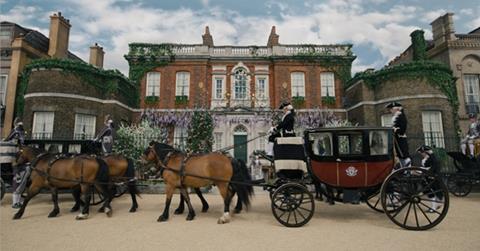
One Of Us has revealed the work it put into the second series of Bridgerton.
The hit Netflix show, produced by Shondaland, focuses on Viscount Anthony Bridgerton (Jonathan Bailey) looking for a wife in its second instalment. One Of Us provided 250 VFX shots, including both environments and creatures, continuing the role it had for the first series and being involved from pre-production.
VFX supervisor, Victor Tomi was part of the One Of Us team, said of working on the show: “It’s a period drama - accurate to its age - but at the same time you can have fun with the visual effects, playing around and introducing a bit of a twist to it.”
The lavish backgrounds are an example of this: “Some of these CG shots look like paintings,” continued Tomi. “It is the nature of the show and it’s great telling artists to be creative. It’s not like any other normal period drama, that’s what is really fun about Bridgerton.”
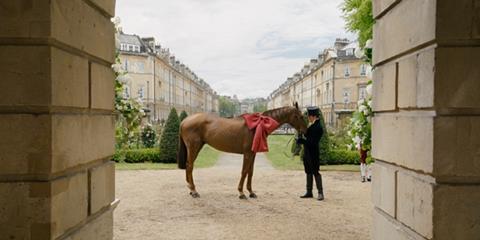
CG supervisor, Zach du Toit, said of the of the close-ups and full CG garden set extensions, “It was a challenge to match the quality of all the beautiful images shot on set with the digital glam we recreated. There’s a lot of consideration in the garden design, with CG flowers and bushes planted right next to the real thing. But it worked immensely well.”
One of the biggest challenges was the complex work that went into creating the creatures. Working from pre-production, Ceylan Shevket, One Of Us’ head of creatures, led the team who created a majestic stag, a peacock tail using a new feather system, and improved the asset of the familiar Bridgerton bee.
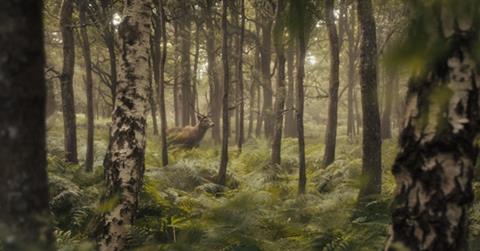
Tomi revealed that the CG stag took the longest: “I have never done a creature sequence like that before. It was a challenge and a good opportunity to learn new skills, but it also plays a really important role in the story.”

One of Us also built and replaced a peacock’s tail, because the bird did not have its iconic plumage at the time of year they were shooting. Shevket said: “We did that through a new feather system, which allows us to make a fully customisable atlas of feathers, giving artists tools to easily create highly detailed feather grooms.
“Each feather is a unique piece of hi-res geometry, combining a polygonal tube for the stem and poly-curves for the barbs. In the case of Peacock this allowed us to accurately design the tail feather and have greater control of the subtle dynamics needed to bring it to life.”
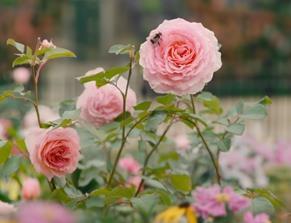
Finally, the familiar bumble bee from season one also saw some changes, allowing for close up shots by upgrading the detail in the wings, body, and groom.
This second season of Bridgerton also provided an opportunity to further develop the One of Us on-set app. 3D generalist Matthew Salisbury explained how the idea got started: “We wanted to explore how we could use the Unreal Engine on set. We imported season one assets into Unreal, and looked at how we might render them within the app. We eventually got to a point where we realised that we have this environment in Unreal, and it’s very easy to set up basic game controls, so you can fly around and explore in real time. We thought: ‘Wouldn’t that be useful if you were on set with the director and rather than looking at a green screen, you are looking at what you would end up looking at in the final shot?’”
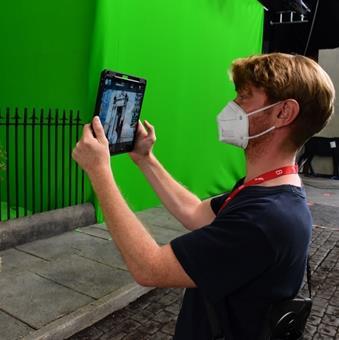
Salisbury worked with Tomi building assets from season one, ready to be tested on set when season two started shooting. He revealed: “At the time we weren’t sure how useful that would be.
“But as soon as Vic got his hands on it, he was like ‘this is the tool we need!” Since then, more and more of our VFX supervisors have been using this app on set.”
This app was especially useful for CG environments like the Bridgerton house - which took reference from two separate houses in Bath and Greenwich. Tomi explained: “We were on set with the director and the DP, looking at a house and then all these green screens behind it.
“They framed it with the camera and then we did the same in the app and we could see how the final look was going to be.” It was extremely useful to realise that a slight camera move could actually reveal a better and more beautiful part of the building.
Apart from the houses, there was another very useful update for the CG stag scene. Tomi continued: “We were shooting in the woods without a creature to frame up on. So having the CG stag on the app with the animations of each of his actions - this was a game-changer.”





























No comments yet